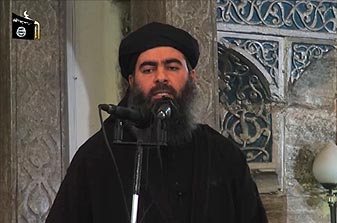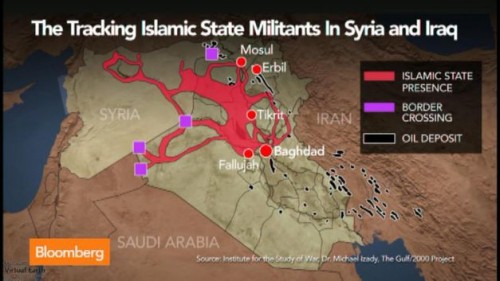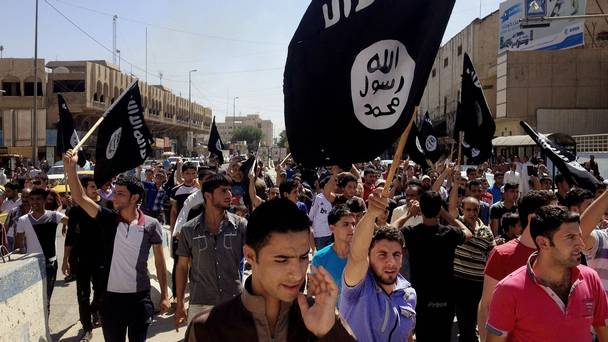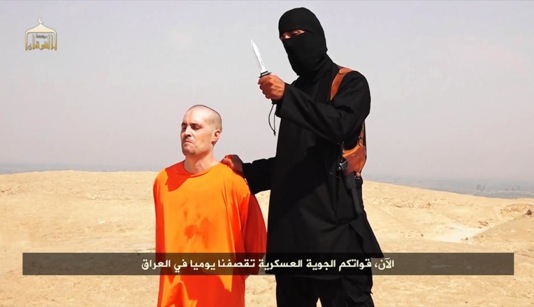
By Adam Schreck And Zeina Karam
The Islamic State militant group that has taken over large parts of Syria and Iraq and declared a self-styled caliphate poses one of the most significant threats to stability in the Middle East in years. But what danger does it immediately pose?
Here are some questions and answers about the Islamic State group:
DOES THE ISLAMIC STATE GROUP RUN A DE FACTO COUNTRY?
The Islamic State group holds roughly a third of Iraq and Syria, including several strategically important cities like Fallujah and Mosul in Iraq and Raqqa in Syria. It rules over a population of several million people with its strict interpretation of Islamic law. It also controls many of the roads linking the communities it has conquered — although much of the territory in between is sparsely populated desert.
It claims thousands of heavily armed fighters, and has set up its own civil administrations and judiciaries.
“It acts as a state in areas that don’t have a state at the moment. It’s effective because it provides services, it has a military presence, it speaks as a state,” said Hassan Hassan, an analyst at The Delma Institute in Abu Dhabi.
In propaganda videos, the group lays out ambitious expansion plans that include targets such as Baghdad, Damascus and Islam’s holiest city of Mecca, Saudi Arabia.
WHAT RESOURCES DOES THE ISLAMIC STATE GROUP HAVE?
The Islamic State group controls oil fields, power plants, dams and factories in Iraq and Syria. Charles Lister, an analyst who closely tracks jihadist groups at the Brookings Doha Center in Qatar, estimates the group is capable of bringing in some $2 million a day just from the sale of oil. The group has long generated cash too from extortion, kidnapping for ransom, illicit businesses and other gangland-style criminal activity.
Militarily, the group has seized heavy weaponry, including tanks, artillery pieces and surface-to-surface missiles, from Iraqi and Syrian forces. Human Rights Watch has accused the group of using ground-fired cluster munitions in at least one place in northern Syria.
WHAT DANGER DOES HAVING THE ISLAMIC STATE GROUP HOLDING THIS TERRITORY IN THE ARAB WORLD POSE?
 The world has seen the risk of allowing a state sympathetic to Islamic extremists exist before. Al-Qaida was able to flourish and plot the Sept. 11, 2001 attacks in large part because it had a safe haven in Taliban-controlled Afghanistan.
The world has seen the risk of allowing a state sympathetic to Islamic extremists exist before. Al-Qaida was able to flourish and plot the Sept. 11, 2001 attacks in large part because it had a safe haven in Taliban-controlled Afghanistan.
The Islamic State group is a far superior threat today than al-Qaida was in 2001. It is richer, operates a modern, effective media arm and holds much more territory than al-Qaida ever did. And while al-Qaida operated on the basis of a loose network of various cells in different countries — a decentralization that worked in its favor in the beginning — the group eventually could no longer centralize its command in a coherent way.
“With the Islamic State we are seeing a highly centralized command and governing structure which will require a new counterterrorism strategy in the region,” said Lina Khatib, director of the Carnegie Middle East Center in Beirut.
Colin Clarke, a political scientist at the RAND Corporation who researches global security, said even without the trappings of any kind of nationhood, the territory that the Islamic State group controls “can still prove to be an incubator for extremism … and exporter of terrorism.”
WHY HAS THE ISLAMIC STATE GROUP ATTRACTED SO MANY YOUNG MUSLIMS?

Both Iraq and Syria are rife with corruption and weakened by sectarian divisions that the Islamic State group and other extremists exploit.
In an audio speech released in July, the group’s leader, Abu Bakr al-Baghdadi, listed instances of alleged oppression of Muslims around the world, describing the “Islamic State” as one that “will return your dignity, might, rights and leadership.”
With its transnational agenda, the group has become a magnet for disenfranchised young Muslims from all over the world.
The group’s leader has called on scholars, judges, doctors and engineers to flock to the region to help build the state. In a recent article, the group’s English-language magazine offered them advice: “Do not worry about money or accommodation. … There are plenty of homes and resources to cover you and your family.”
DOES THE ISLAMIC STATE GROUP WANT TO STRIKE THE WEST?
The Islamic State group so far has shown little desire, let alone the capability, to launch major terrorist attacks in the West. But that could change.
Islamic State militants called American journalist James Foley’s gruesome videotaped beheading revenge for U.S. airstrikes against the group, and they still hold at least three other Americans hostage, including freelance journalist Steven Sotloff. A video posted online Tuesday purported to show Sotloff’s beheading by the group.

Apart from Foley’s killing and random threats by individual fighters, however, there are few other instances in which the Islamic State group officially threatened the U.S. of the West. This sets apart the group from al-Qaida, which has long made attacks on the West a priority.
CAN THE ISLAMIC STATE GROUP EXPORT TERRORISM TO THE WEST?
Western officials are concerned about the threat posed by Islamic State sympathizers. They point to the case of Mehdi Nemmouche, a Frenchman who authorities say fought alongside Islamic State militants before he shot four people at the Jewish Museum in Brussels in May.
Analysts believes the group is foremost a regional threat but acknowledge that “lone wolf” attackers inspired by the group’s ideology do threaten the West.
Saudi Arabia’s King Abdullah warned last week: “If neglected, I am certain that after a month they (IS) will reach Europe and, after another month, America.” British officials have raised the country’s terror threat level to “severe,” its second-highest level, because of developments in Iraq and Syria.
Business Week / AP
Leave a Reply
You must be logged in to post a comment.